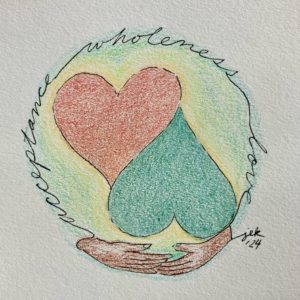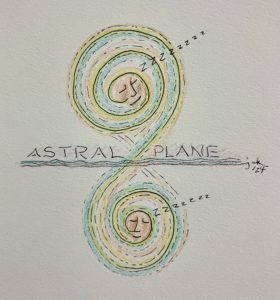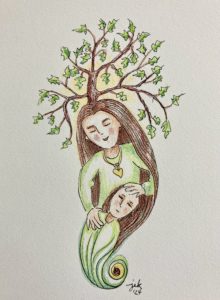
-Illustration © 2023 Jan Ketchel
At one point, Don Juan Matus abruptly threatened the continuation of Carlos Castaneda’s shamanic apprenticeship by challenging him to immediately disengage from all his attachments and habits of daily life, thus erasing personal history, a prime tenet of a shaman’s advancement. For instance, Carlos was encouraged to immediately dissolve a lucrative tie dye tee shirt business partnership, which he did within a few hours.
Erasing personal history means ending the control of an identity, rooted in past associations, that continues to define one’s present life activities and sense of self. When I was in Castaneda’s world, I experienced people taking this insinuation to change to the extreme, completely leaving their daily lives, even changing their names, to free their energy to be employed in a totally new way.
This radical form of dissociation from the past is more a metaphor than a practical and effective form of achieving desired change. As a therapist, or spiritual guide, I approach such an intent for new life through the experience of changing one’s past self, and thereby, altering one’s present and future selves. Changing one’s past self is indeed erasing the hold of one’s personal history.
To change the past self we must fully revisit it. The power of suggestion is extremely powerful and can indeed change the present self, at least temporarily, through the power of dissociation. However, our wholeness requires us to fully associate with ourselves, which requires full acceptance, not dissociation, from our past self, and all it has experienced.
When we encounter our past self we must be willing to feel the fullness of everything it has experienced. This includes its feelings, bodily sensations, and beliefs, particularly around powerful experiences that overwhelmed its capacities and froze its further development.
The presence of the past self’s frozen state is experienced in what is called a trigger. When we are triggered our past self eclipses present self adaptation, as we become locked in our frozen past. Often, we expect others to respect our triggers, controlling their speech and behavior so as to protect us from experiencing the sting of our triggered, unsettled younger self.
Relationships are often tasked to avoid each other’s minefield of triggers. Sometimes this is considered an act of true love. How ironic. For triggers, once resolved, are the gateway to new and fuller love of self and other.
When the present self is fully able to be present to the experience of its past self, we begin to change the past. For one thing, this very act of showing up establishes a new fact of the past: Whatever was experienced in the past no longer has the power to shut one down.
When the present self is fully present for the past self it is also no longer alone. This alters its isolated experience of the past, as the present self becomes a true traveling companion to the past self’s journey.
When the past self relives its frozen moments, it is encouraged to express its innate reactions that were previously suppressed. Words and agency come on line and metabolize a prior silent scream. The body breaths deeply as it expands beyond its habitual, frozen in time, stance.
In a dream, I am back in an old neighborhood under great siege of winter storm. I am confronted by an intimidating, rageful acquaintance. His threatening silent glare intensifies as his eyes bulge. I force myself to speak, refusing to accept this frozen encounter. A portion of my past self is changed in that moment.
Dreams often present us with dramas that are permutations of our frozen moments. With consciousness we can send our present ego self into dreaming with the intent to act where we were once previously frozen. Ego advance in dreaming generalizes to ego advance in waking life.
Often, the cognitive understanding of frozen moments in time is highly distorted for defensive reasons, or developmentally hampered by the age at which the traumatizing event occurred. The developmentally matured and advanced present self can be extremely helpful in broadening the scope of the past self’s experience by exploring factors unavailable to the younger self. This can considerably alter the past self’s identity, which then contributes a changed foundational stone to the present self’s state of being.
A fully transformed younger self no longer lives in the prison cell of its frozen past. While this in no way erases the facts of its prior experience, the younger self is no longer emotionally or cognitively conditioned by it. Its freed energy is liberated to rejoin its wholeness of being.
Thus, the past becomes fully recovered, resolved and revitalized for new life. The fully matured past self delivers its evolved gift to the present and future of self. This is how to truly erase personal history.
Erasing,
Chuck




